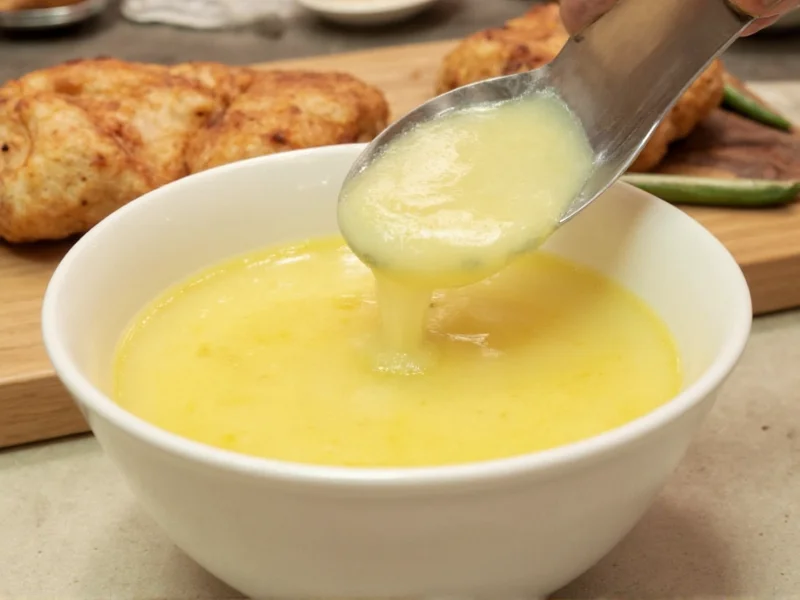The simplest authentic egg drop soup requires just 6 ingredients: 4 cups chicken broth, 2 eggs, 1 tbsp cornstarch, 1 tsp ginger, 1 green onion, and salt. Whisk eggs separately, bring broth to simmer, thicken with cornstarch slurry, then slowly pour in beaten eggs while stirring. Cook for 2 minutes. Total time: 15 minutes. Serves 2.
Mastering the Perfect Egg Drop Soup: A Chef's Guide
Egg drop soup, known as dan hua tang in Chinese cuisine, has comforted generations with its silky texture and delicate flavor. This classic Chinese-American dish originated from the Fujian province's culinary traditions, where chefs perfected the technique of transforming simple ingredients into elegant broths. Unlike restaurant versions loaded with MSG, homemade egg drop soup showcases the beauty of minimalism—when executed properly, the ribbons of egg should float like golden silk in a clear, aromatic broth.
Why This Recipe Works
Many easy egg drop soup recipes fail because they skip crucial technique steps. The secret lies in temperature control and egg incorporation method. When you slowly drizzle beaten eggs into gently simmering broth while stirring in one direction, you create those signature feathery strands instead of scrambled chunks. This authentic Chinese egg drop soup technique separates amateur attempts from restaurant-quality results.
Essential Ingredients Explained
Quality ingredients make the difference between bland and brilliant soup. Here's what you need and why each matters:
| Ingredient | Why It Matters | Pro Tip |
|---|---|---|
| Homemade chicken broth | Provides depth of flavor commercial broths lack | Simmer bones for 4+ hours for best results |
| Fresh eggs | Creates vibrant yellow ribbons; older eggs produce paler strands | Use room temperature eggs for smoother incorporation |
| Fresh ginger | Adds aromatic warmth without overpowering | Thinly slice rather than grate for subtle flavor infusion |
| Cornstarch | Creates signature silky texture (optional for clear version) | Mix with cold water first to prevent lumps |
Step-by-Step Preparation
Prep Work (3 minutes)
Begin by preparing your mise en place. Thinly slice one green onion, separating white and green parts. Peel and slice 1 teaspoon fresh ginger into matchsticks. In a small bowl, whisk two large eggs until completely uniform—no streaks of white should remain. For the egg drop soup without cornstarch variation, skip the thickener, but most traditional versions use it for that characteristic silky mouthfeel.
Cooking Process (10 minutes)
- Pour 4 cups (32 oz) good quality chicken broth into a medium saucepan
- Add ginger slices and the white parts of green onions
- Bring to a gentle simmer over medium heat (do not boil vigorously)
- For thickened version: Mix 1 tbsp cornstarch with 2 tbsp cold water, then slowly stir into broth
- Reduce heat to maintain a gentle simmer (small bubbles breaking surface)
- Slowly pour beaten eggs in a thin, steady stream while stirring broth in one direction
- Cook for exactly 2 minutes—any longer and eggs will become rubbery
- Remove from heat and stir in green onion tops and salt to taste
Avoiding Common Mistakes
Most egg drop soup step by step guides don't warn about these critical pitfalls:
- Boiling broth too hard: Vigorous boiling breaks up egg ribbons. Maintain a gentle simmer
- Adding eggs too quickly: Pour in a thin, steady stream while stirring continuously
- Overcooking: Eggs continue cooking off-heat. Remove from burner after 2 minutes
- Using cold broth: Cold liquid causes eggs to seize up instead of forming ribbons
Delicious Variations
Once you've mastered the quick egg drop soup for beginners, try these authentic variations:
Vegetarian Egg Drop Soup
Substitute mushroom broth for chicken broth and add ½ cup sliced shiitake mushrooms during simmering. The umami from mushrooms creates depth without animal products. This egg drop soup for colds variation works wonderfully when you're feeling under the weather.
Spicy Szechuan Style
Add ½ teaspoon Szechuan peppercorns and 1 teaspoon chili oil with the broth. Finish with a sprinkle of dried red pepper flakes. The numbing-spicy profile transforms this simple soup into something extraordinary.
Creamy Version
For those wondering how to make egg drop soup creamy, whisk in 2 tablespoons of heavy cream after removing from heat. The cream creates a luxurious texture while maintaining the delicate egg ribbons.
Serving and Storage Tips
Serve immediately in pre-warmed bowls—the soup cools quickly. Garnish with additional sliced green onions and a few drops of sesame oil. For the best texture, egg drop soup cooking time should never exceed 15 minutes from start to finish.
Store leftovers in an airtight container for up to 2 days. Reheat gently over low heat—never boil, as this will scramble the eggs. The soup will thicken upon standing; add a splash of broth when reheating.
Why Homemade Beats Takeout
Restaurant egg drop soup often contains excessive sodium, MSG, and artificial thickeners. Your homemade egg drop soup ingredients control the quality and quantity of each component. The fresh ginger and real chicken broth create nuanced flavors that processed versions can't match. Plus, making it yourself takes less time than waiting for delivery!











 浙公网安备
33010002000092号
浙公网安备
33010002000092号 浙B2-20120091-4
浙B2-20120091-4